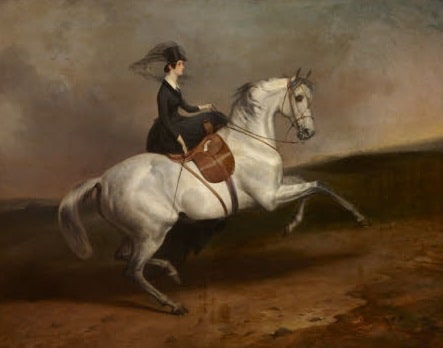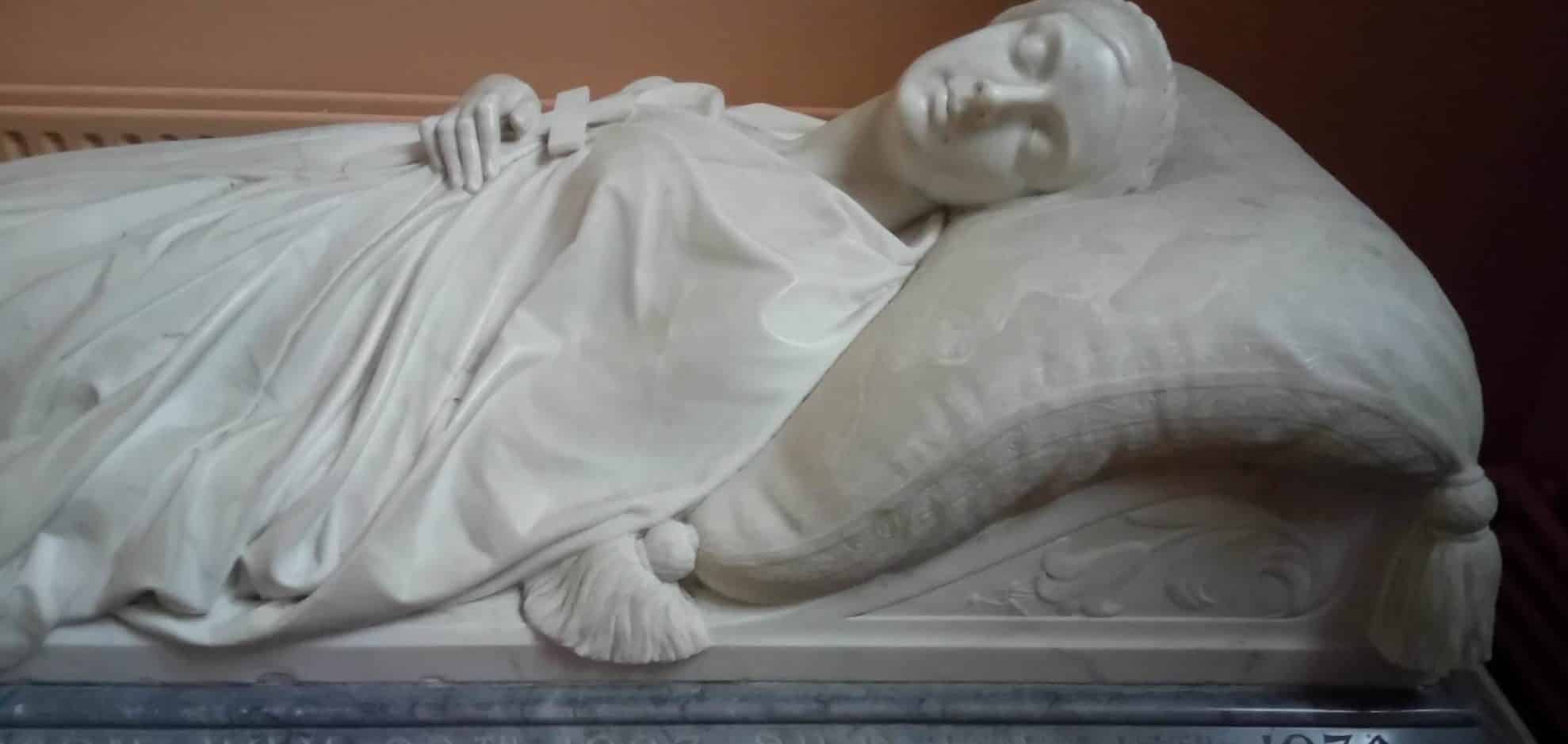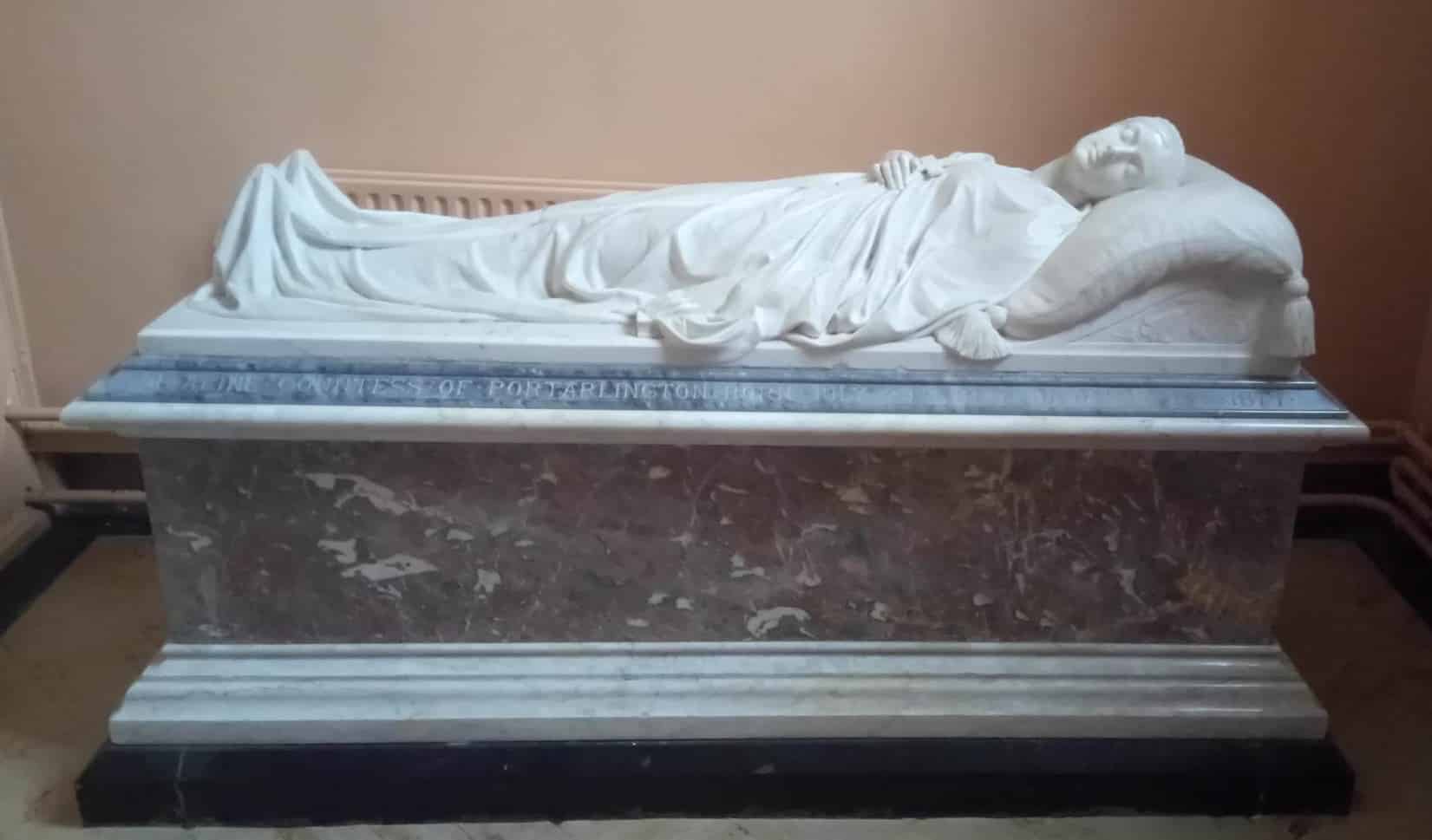
Here we have a monument or effigy of Countess Aline Portarlington dedicated to her and unveiled in May 1875 by her dearly beloved husband the 3rd Earl of Portarlington; Henry John Reuben Dawson-Damer. Countess Aline was born on the 29th of July 1823 the 3rd child of Charles William Vane, 3rd Marquess of Londonderry (who was listed as one of the richest men in the United Kingdom) and Lady Frances Anne Vane-Tempest. Lady Alexandrina Octavia Maria Vane or Aline as we will call her was named after her Godfather, the Russian Tsar Alexander I.
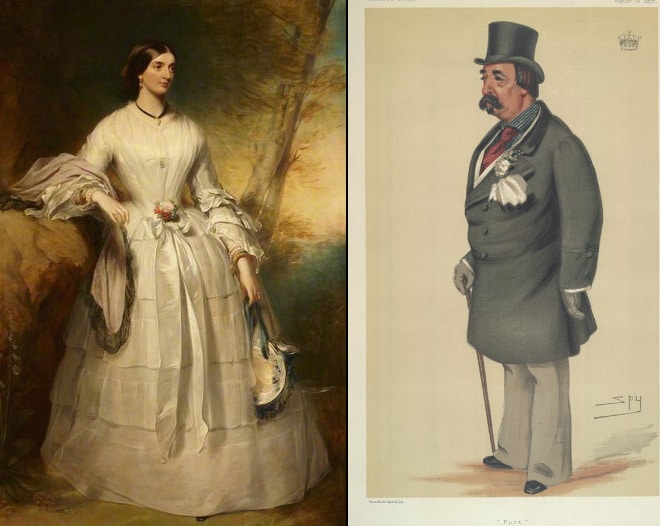
The 3rd Earl took her hand in marriage on September 2nd 1847 and they arrived at Emo Court in August the following year. This move coincided with the ravages of the Great Famine which affected every parish and corner of the country including the estates of Earl Portarlington. It is understood that the Earl and his wife Aline were benevolent landlords and helped establish the Poor Laws on their estate. These laws helped provide food and work relief for the tenants. Nonetheless they continued to enjoy a luxurious lifestyle within the confines of Emo Court holding balls and dinners for the gentry during the famine period, one particular ball occurred in January 1849. It was at these events and mingling with high society which Countess Aline became renown for as an intellectual conversationalist and refined decorum. In fact her society was much sought after amongst the Victorian era aristocracy in Ireland and abroad.
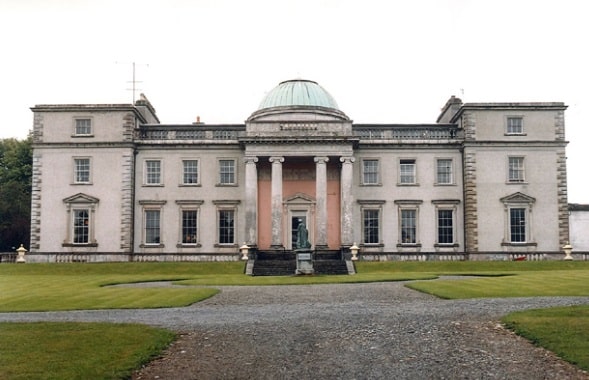
By 1861 Aline and the Earl donated lands to the Catholic Church at Emo where the present Parish Church stands today. Shortly afterward Aline converted to Catholicism and often entertained prominent churchmen at Emo Court. At the age of 51 she suffered a brief illness and passed away on the 15th of January 1874. She was buried at the church in Emo amidst a large funeral of over ten thousand people who came along to pay their respects. Perhaps such an outpouring of grief amongst the parishioners was in some way an indication of the respect they had towards their benevolent landowner and her conversion to Catholicism, the religion of the people. She died without bearing any children.
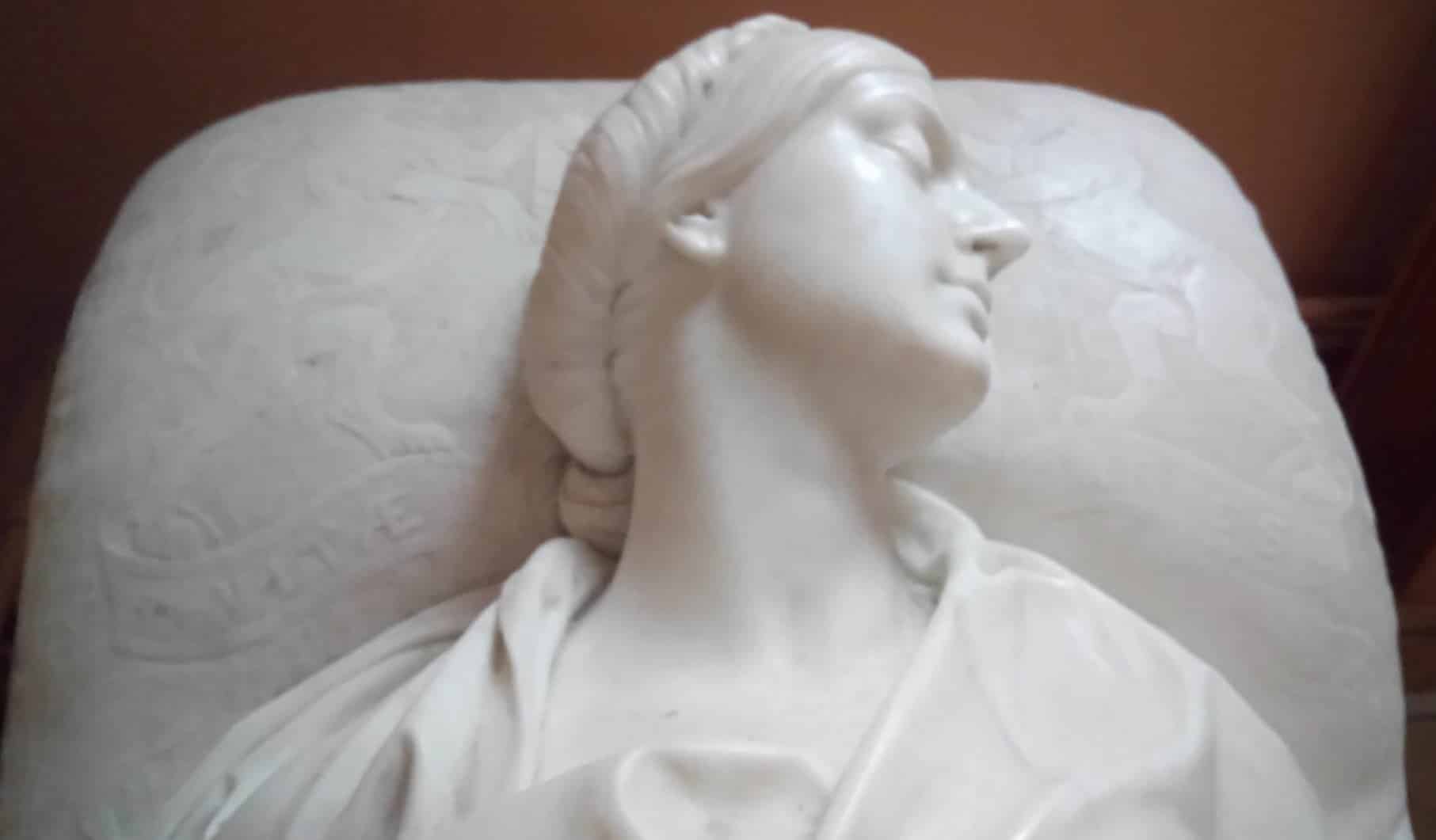
In May 1875 the widower Earl unveiled this beautiful marble effigy by the renowned royal sculpture Boehm. Joseph Edgar Boehm was of Austrian decent but came to England and was a much sought after sculpture during the Victorian era, who worked on projects such as colossal statue of Queen Victoria, also executed in marble (1869) for Windsor Castle, and the monument of the Duke of Kent in St George’s chapel as well as the Statue of John Bunyan and Victorian coinage for the United Kingdom.
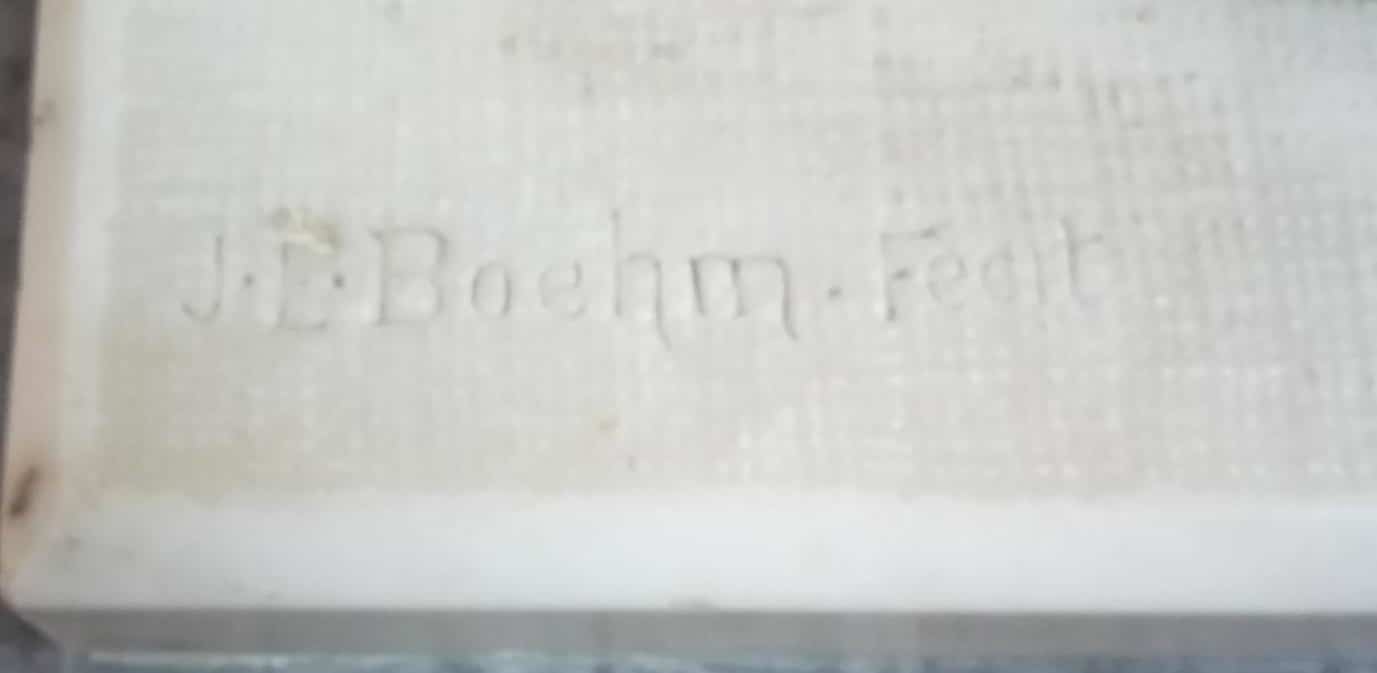
Today the effigy lies as gracefully as it did in 1875 at the northwestern end of the church. It’s execution in marble captures a smooth sophisticated lady in her eternal sleep complete with a cross in hand with her head rested on a pillow impressed with the coat of arms of Dawson-Damer Family to which she married into. The motto on the coat of arms reads; “Vitae via Virtus” =Virtue is the way of life. Along the side panel is a quote from one of the Pauline epistles of the New Testament of the Christian Bible, it reads; O death, where is thy sting? O grave, where is thy victory? Interestingly a Biblical quote associated with St. Paul to whom the church is dedicated too.
